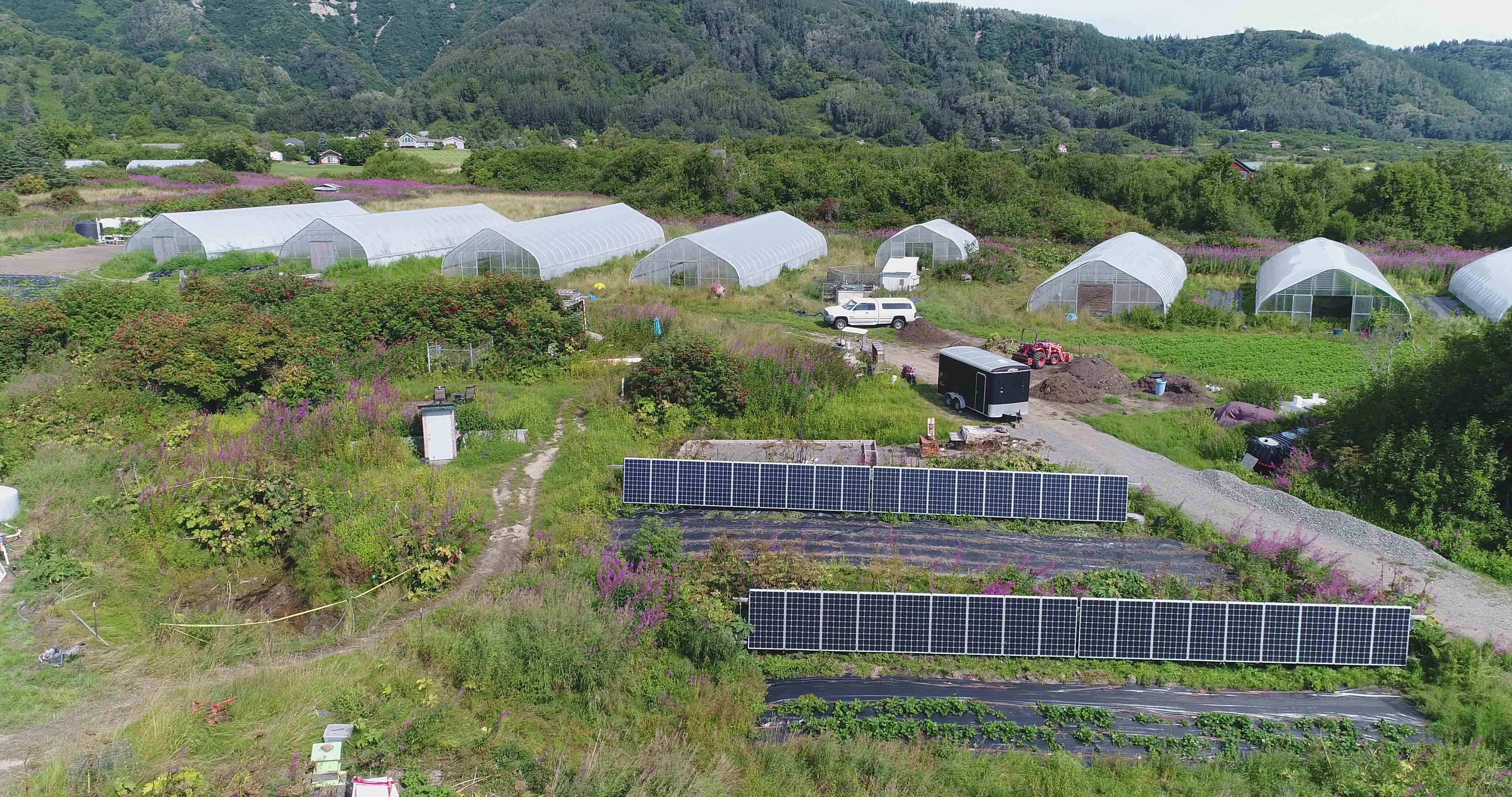Agrivoltaics debut at the 2023 Food and Farm Festival
December 15, 2023

Many farms around Alaska have small solar arrays to offset their local electricity consumption.
Savannah Crichton and Glenna Gannon gave a presentation and worked to build community around a new project called Agrivoltaics: Unlocking Mid-Market Solar in Rural Northern Climates at the 2023 Alaska Food and Farm Festival in Anchorage in November, where leaders in agriculture, farming and cooking convened.
Crichton is a research professional with the Solar Techndescribed by link will open in a new windowologies program at the Alaska Center for Energy and Power and Gannon, assistant professor of sustainable food systems at the University of Alaska Fairbanks Institute of Agriculture, Natural Resources and Extension, is a co-investigator on the project.
Agrivoltaics is the use of solar panels in agriculture to produce both food and electricity. Unlike the lower 48, in northern latitudes, rows of solar panels need to be spaced out to accommodate the low angle of the sun and to prevent shading. Solar farms with this design, including the new 8.5-MW installation in Houston, Alaska — the largest solar farm in the state — have ample room between panels for crop plots.
In collaboration with Alaska Pacific University’s Spring Creek Farm in Palmer, the research team will monitor the responses of vegetables, grazing crops and wild edibles planted between the solar panel rows. Crichton explained that the same plot of land will sell clean energy to Matanuska Electric Association while also providing the community with fresh produce.
Increasing food sovereignty and energy security in Alaska and other northern climates is the main objective of the project.
“Involving stakeholders from the inception of the project is crucial as community voices provide a grounded understanding of how agrivoltaics may be adopted and the anticipated barriers or benefits,” Gannon said.

Festival attendees collaborate during the event’s facilitated group discussions.
The presentation drew interest from conference attendees, and Crichton and Gannon shared how their organizations or farms could participate in and eventually adopt agrivoltaic systems on their own property.
“From farmers across the state, there is a desire to embrace innovative, renewable systems that could also potentially boost their crop production,” Crichton said. “For communities, this means strengthening local food systems.”
The agrivoltaics research in Houston will produce agricultural yield data, photovoltaic performance data and a techno-economic analysis. The hope is that these figures will help guide the next generation of farmers, utilities, solar industries, tribal entities and government agencies towards renewable, regenerative growing technologies.
This project is a collaboration of researchers from UAF, Alaska Pacific University and Renewable IPP, and funded by the U.S. Department of Energy’s Office of Energy Efficiency and Renewable Energy under the Solar Energy Technologies Office and CleanCapital.



